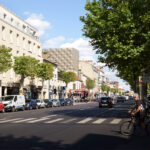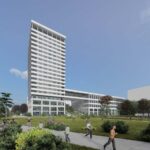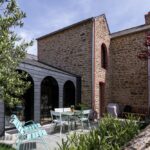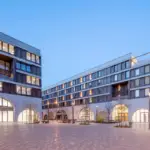Montlouis-sur-Loire homes, French housing units, Northern France property development images, Architect
Montlouis-sur-Loire Housing
French Residential Buildings design by Renaud BROISSAND architect DPLG
23 Aug 2013
Design: Renaud BROISSAND architect DPLG
Location: France
49 SOCIAL HOUSING ESTATES

photo © David BOUREAU and Courtesy of R. BROISSAND
Montlouis-sur-Loire Social Housing
The Mayor of Montlouis-sur-Loire has launched an ambitious urban study for the creation of a new town center – the Zone d’Aménagement Concertée (ZAC), or special planning district, known as the “Heart of the City” – in this municipality of 12,000 inhabitants situated on the left bank of the Loire, 12 kilometers east of TOURS. A vast area of land was made available before beginning this urban development project, which comprises a diverse range of residences and services surrounding a landscaped public park. The town has demonstrated its ecological commitment by choosing a project management team with extensive experience in environmentally conscious design. The architect Philippe MADEC, a specialist in the subject, directed the team (BLM architects & BROISSAND Architects) in defining the urban project and the ground plan for the new constructions.
Philippe MADEC presents the urban development project in the following terms:
“The sequencing of the buildings (vertical and horizontal, architectural, etc.) will extend the diversity of the surrounding structures. The goal is to avoid creating a monolithic effect in the new section of town, which would contrast brutally with the existing, heterogeneous built environment. The buildings’ thin volumes should, incidentally, encourage the maximum number of housing accommodations with double exposure. The town and the developer are aiming to concretize a town-center project that is qualitative on all levels: landscape, architecture, quality of housing, functional diversity and environmental quality.”
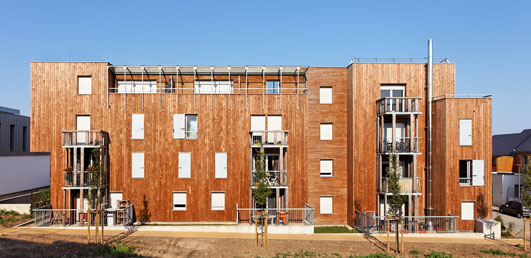
photo © David BOUREAU and Courtesy of R. BROISSAND
Montlouis-sur-Loire Eco-districts – The Environmental Paradigm
ECO-DISTRICTS – THE ENVIRONMENTAL PARADIGM
Our architectural plan for 49 social housing estates was the first to be launched after the municipality’s approval of the urban planning project. In order to extend and concretize the environmental requirements indicated in the specifications for the project, we undertook our study after having visited several exemplary developments with similar environmental and economic objectives and built within a comparable urban context.
The eco-district of Freiburg in Germany was amongst the emblematic and persuasive experiments that have influenced our work, and with which we wish to affirm a connection. The special relationship maintained between private and collective areas (the communal service areas – the exterior spaces) is particularly successful and establishes the conditions for effective community-living and social interaction. During our visit, we noted the quality of public spaces (interior and exterior), sites of exchange and collective activity upon which the success of such a project depends.
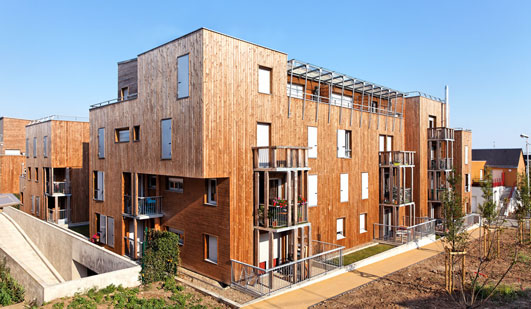
photo © David BOUREAU and Courtesy of R. BROISSAND
The quantifiable energy aspect (solar panels – insulation – heat production – etc.) of the environmental agenda is combined with the implementation of collective residential practices designed to encourage the sharing of equipment (crèches – laundry facilities – garage – etc.) and resources (water – heating – waste disposal). These two aspects of the sustainable development approach are complementary, demonstrating the success of this eco-district: ecology as a practice of the collective habitat.
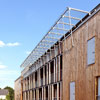
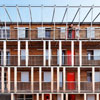
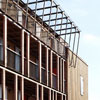
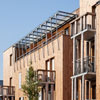
photos © David BOUREAU and Courtesy of R. BROISSAND
New French Social Housing Design
SOCIAL HOUSING – ARCHITECT / ACTOR AGAINST THE SYSTEM
Strengthened by what we learned from our visit to Freiburg, we wish to propose a re-interpretation of this paradigm of “ecological” architecture adapted to the specific local context of Montlouis-sur-Loire, but without falling into a narrowly regional outlook.
The morphology proposed by the urban project consists of an intervention comprising three buildings of markedly different and complementary scales, and extending the diversity of the surrounding structures. The goal is to avoid creating a monolithic effect in the new section of town, which would contrast brutally with the existing, heterogeneous built environment:
– 1 principle L-shaped building containing about thirty apartments. Four stories (ground + 3) with two stairwells (A/B).
– 1 small-sized three-story building (ground +2) containing three apartments with exterior circulation and stairwell (C).
– 1 linear four-story (ground +3) building containing about twelve apartments and a single stairwell (D).
The typology of the intervention is determined by bioclimatic considerations, namely:
– no accommodation should be mono-oriented towards the North
– all accommodations with a north-facing façade are of double exposure and have a generously open southern façade in order to enjoy its free and natural thermal and bioclimatic benefits, in compensation for losses on the northern façade.
This arrangement allowed us to design a type of integrated, double-exposed accommodation (complete transparency) that is original and complemented by an exterior distribution via a walkway on the northern façade, and open towards the landscape (the Loire Valley).
In addition, duplex accommodations are located throughout in the attic levels, in order to bypass the “Handicapped/Reduced Mobility” regulations requiring an elevator for access beyond three levels. This strategy allows us to offer accommodations that are spatially and functionally outside of the norm.
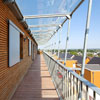
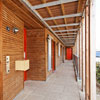
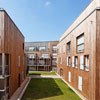
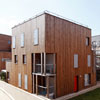
photos © David BOUREAU and Courtesy of R. BROISSAND
Housing Low Tech / Low Cost Design
LOW TECH / LOW COST
The chosen modes of construction (wood/reinforced concrete) are the result of a reflection upon the anti-architectonic nature of buildings with external wall insulation, and constitute a satisfactory alternative solution. Our choice was oriented towards a combined wood/reinforced concrete construction:
– Structural WOOD for timber-framed façades + treated wood cladding
– CONCRETE for infrastructures and superstructures (slabs and bracing walls)
The technicality and specificity of all-wood construction did not seem pertinent to us given the economic conditions of the project – no additional costs were acceptable for the Project Management in this particular intervention (1215 € + VAT/m² habitable area).
Finally, we developed an autonomous and self-supporting principle of construction for exterior spaces (continuous and individual balconies) on a post and beam timber structure using an original composite flooring complex together with a peripheral framework in galvanized steel. This simple system nevertheless required a delicate adjustment during construction; this made it possible to almost completely eliminate the problematic thermal bridges at the level of the balcony slabs, as well as allowing total accessibility for persons of reduced mobility (there is no threshold on the access door) due to the continuous interior/exterior flooring.
Renaud BROISSAND architect DPLG – March 2013
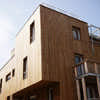
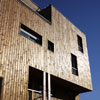
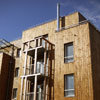
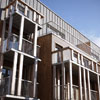
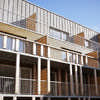
images : Renaud BROISSAND architect DPLG
Montlouis-sur-Loire Social Housing – Building Information
Location: MONTLOUIS / LOIRE (37) – FRANCE
Contracting Owner: NOUVEAU LOGIS – SNI Group – TOURS – FRANCE
Architect: Renaud BROISSAND Architect DPLG – PARIS – FRANCE
Architects Collaborators: Eric HARDY – Augustin BRISEDOU
Area: 3,120 sqm
Cost: 4,530,000 € TTC 1215 € HT/sqm
Years: 2009-12
Certifications: HEQ « green building » H&E Labels THPE and Qualitel
Photographs: © David BOUREAU and Courtesy of R. BROISSAND
Montloui sur Loire Housing images / information from Renaud BROISSAND architect DPLG
Location: Montlouis-sur-Loire, France, western Europe
New Buildings in France
French Architectural Projects
French Architect Offices – design firm listings
Paris Architecture Tours by e-architect
French Residential Architecture
Architects: Koz architectes
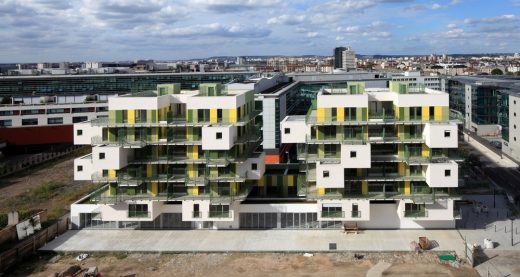
photography © Guillaume Grasset and Jean-Baptiste Pellerin
28 Social Housing Units in Courbevoie
Mozart ZAC Housing, Lyon
Design: Tectoniques
Mozart ZAC Housing
DI-VA house, Lyon, southern France
Design: Tectoniques
House in Lyon
Hôtel d’entreprises Binet, Rue René Binet, Porte de Montmartre district, north-west Paris
Design: AZC Atelier Zündel Cristea, Architects
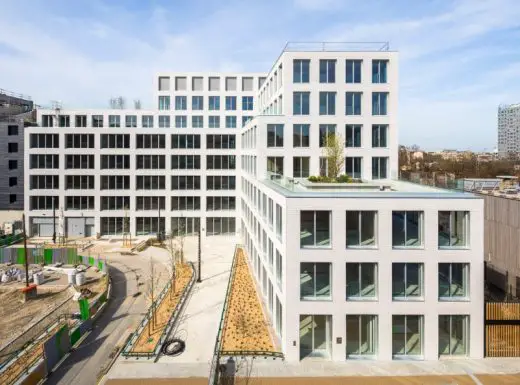
photo : Sergio Grazia
Binet Business Hotel
Buildings / photos for the Montlouis-sur-Loire Social Housing France – French Residential Architecture page welcome

